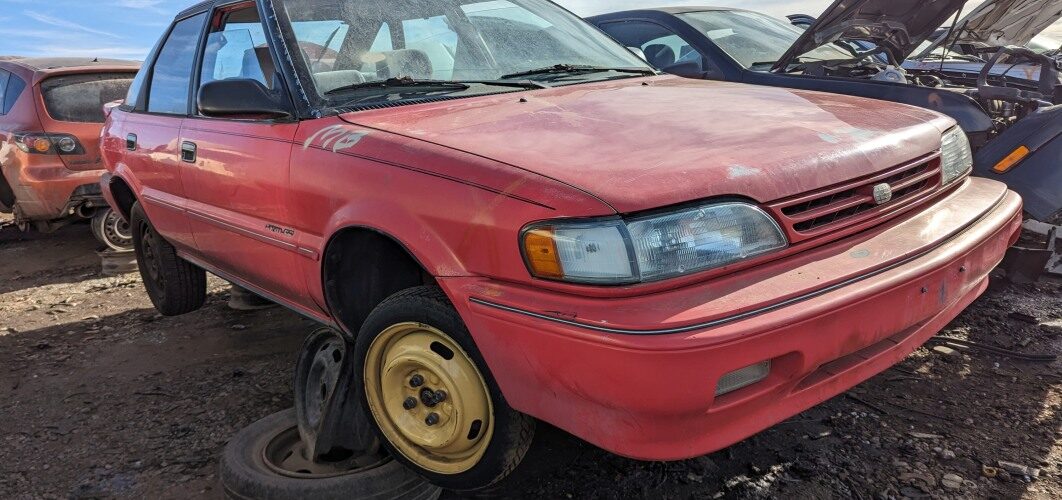GM created the Geo brand in order to sell vehicles built and/or designed by its Japanese partners: Suzuki, Isuzu and Toyota. The Geo Prizm was sibling to Toyota’s E90 Sprinter and built at the NUMMI plant in California from the 1990 through 1997 model years (after which it became a Chevrolet through 2002). For 1990 through 1992, a high-performance version of the Prizm called the GSi was available, and I’ve found a rare hatchback version in a Colorado wrecking yard.

Though the Prizm was based on the Corolla-related JDM Toyota Sprinter, it was mechanically identical to same-year Corollas then being sold in the United States (and built on the same assembly line in Fremont). The powertrain in the Prizm GSi is what was bolted into the same-year U.S.-market Corolla GT-S.

In this case, that means a “red top” 4A-GE DOHC 1.6-liter straight-four, rated at 130 horsepower.

A five-speed manual was base equipment, but this car has the optional four-speed automatic.

The hatchback Prizm, which was based on the JDM Sprinter Cielo, was built for just the 1990 and 1991 model years. I’ve found a few Prism GSi notchback sedans during my junkyard travels, but this is the first hatchback version.

NUMMI (New United Motor Manufacturing Incorporated) in the San Francisco Bay Area was GM’s Fremont Assembly plant from 1963 through 1982 prior to becoming a joint Toyota-GM venture in 1984. NUMMI shut down in 2010 after the final Corolla was built there, after which it became the Tesla Factory. I had a warehouse job during the summer of 1989 that involved delivering paint filters to NUMMI, so perhaps I hauled the filters that strained the paint that went on this very car.

This one is well-equipped, with air conditioning and a decent-for-1990 AM/FM/cassette deck boasting Dolby, digital tuning and auto-reverse.

It traveled just short of 175,000 miles during its career, which is pretty good for a car of its era but not very impressive compared to some of the extreme-high-mile junkyard Toyotas I’ve documented. Members of the Corolla family, being cheaper than Camrys, Avalons, Previas and so forth, tend to get thrown away before reaching 300,000 miles (though I’ve found a 322k-mile 1990 Prizm, a 315k-mile 1991 Corolla wagon and a 311k-mile 1996 Corolla sedan in boneyards).

Starting with the 1993 model year, the Prizm became an E100 Sprinter and the GSi version got the axe.
More power than the Civic, a better warranty than the Corolla, cheaper than the BMW 3 Series.
Oldsmobile hired Leonard Nimoy to pitch its futuristic machinery, but Geo got Harlan Ellison.

